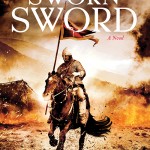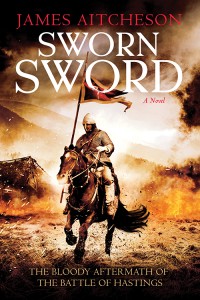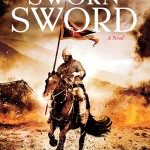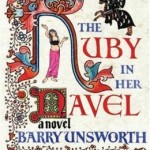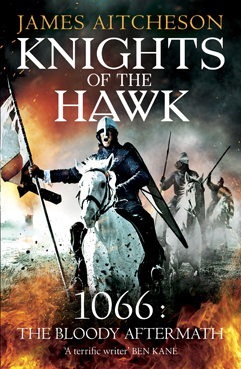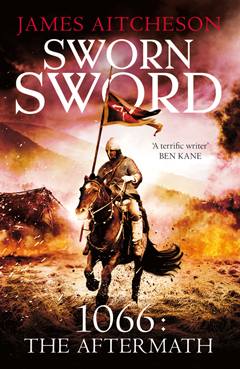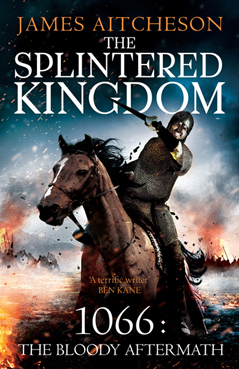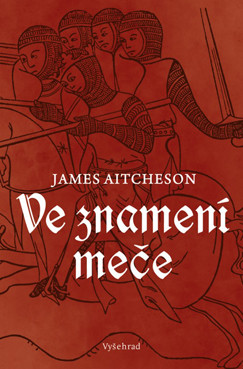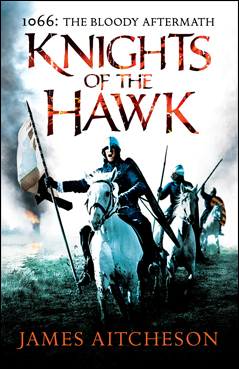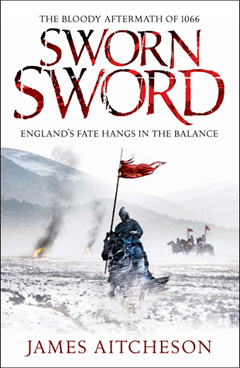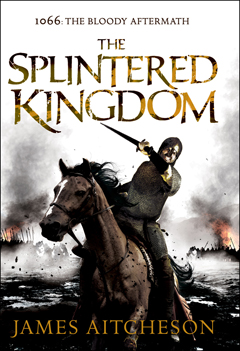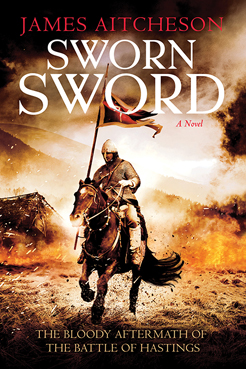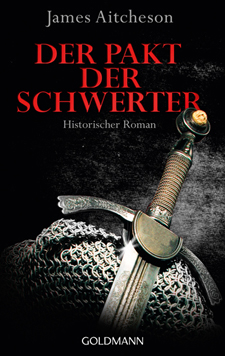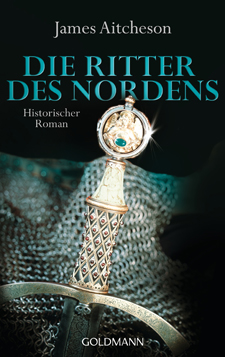The Normans are coming! Not content with conquering England, they now have their sights set on the USA as well…
And their campaign begins today with the Stateside release of Sworn Sword in both hardcover and eBook editions, courtesy of the hard-working people at my publisher Sourcebooks Landmark, who have done an absolutely fantastic job of making the book a reality.
As readers in the UK already know well, Sworn Sword is the first instalment in the Conquest Series, which tells the story of the violent and treacherous years immediately following the Norman invasion of England in 1066, when rebellion gripped the kingdom and its fate hung in the balance. As will become clear, the fateful Battle of Hastings was not the end of the struggle for England; in fact, it was just the beginning.
Based on real-life events, the series follows the career of the ambitious young knight Tancred, who is hungry for battle, for glory and for vengeance after his lord is murdered by English rebels. To find out more, have a look at the cover blurb and download the first chapter from Sworn Sword to whet your appetite.
The second in the series, The Splintered Kingdom, will be published in the US in summer 2014, followed by Knights of the Hawk in summer 2015, so there are plenty of Norman Conquest-related adventures to look forward to! As always, I’ll be posting the latest information about the novels as and when I have it, so keep checking back from time to time to see what’s new.
Based on real-life events, Sworn Sword tells the story of the great rebellions that swept England in the years after 1066, as seen through the eyes of a Norman knight named Tancred, who seeks vengeance after his lord is killed by English rebels.
Published by Sourcebooks Landmark, it’ll be available from all good bookstores and, of course, online as well, in both hardcover and eBook editions. Here’s the full synopsis:
January, 1069. Less than three years after the Battle of Hastings in 1066 and the death of the usurper, Harold Godwineson, two thousand Normans march in the depths of winter to subdue the troublesome province of Northumbria. Tancred a Dinant,a loyal and ambitious knight, is among them, hungry for battle, honor, silver, and land.
But at Durham, the Normans are ambushed in the streets by English rebels, and Tancred’s revered lord Robert de Commines is slain. Badly wounded, Tancred barely escapes with his own life. Bitterly determined to seek vengeance for his lord’s murder, the dauntless knight quickly becomes entrenched in secret dealings between a powerful Norman magnate and a shadow from the past.
As the Norman and English armies prepare to clash, Tancred uncovers a cunning plot that harks back to the day of Hastings itself. If successful, it threatens to destroy the entire conquest-and change the course of history.
This stunning debut sweeps readers into a ruthless, formidable world, where violent warriors seek honor in holy places and holy men seek glory in dark deeds. As the two opposing forces battle for conquest, the fate of England hangs in the balance.
Battles and betrayals abound, and there’s also a touch of romance, too – something, I hope, for everyone. And if that’s whetted your appetite, here’s the first chapter to give a further taste of what’s in store.
During the course of 2006-7, when I was first laying pen to paper on the early drafts of the manuscript that would become Sworn Sword, I was fortunate enough to read a number of historical novels that really inspired me. In recent weeks I’ve been revisiting a few of those novels, to see if they still hold the same fascination for me five or so years on, and whether with the benefit of more writerly experience I view them any differently now.
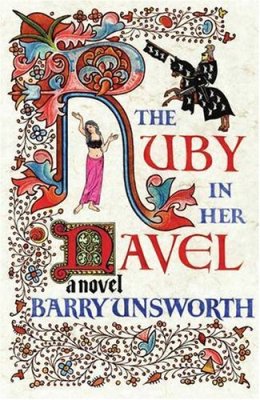 Among those books were titles by Bernard Cornwell, C. J. Sansom, and Robert Harris, set in periods ranging from Rome in the late Republic to Tudor England. Particular inspiration, however, came from The Ruby in Her Navel by celebrated British author Barry Unsworth.
Among those books were titles by Bernard Cornwell, C. J. Sansom, and Robert Harris, set in periods ranging from Rome in the late Republic to Tudor England. Particular inspiration, however, came from The Ruby in Her Navel by celebrated British author Barry Unsworth.
Longlisted for the Booker Prize in 2006, it’s set in mid-12th century Sicily in the reign of King Roger II, more than seventy years after the Norman conquest of the island, in a brief and peculiar (for the Middle Ages) period of toleration that saw various ethnic and religious groups – Normans, Italians, Saracens and Byzantine Greeks; Muslims, Jews and both Western (Latin) and Orthodox Christians – co-existing in apparent harmony despite the political fallout from the recent failure of the Second Crusade. More specifically, it’s the story, told in the first person, of a young would-be knight named Thurstan Beauchamp, who works as a purveyor of entertainments and occasional envoy and spy – for want of better terms – attached to the Diwan (Office) of Control in the palace administration.
What unfolds is a tapestry of competing nobles, royal officials, churchmen, all with their own ambitions and plans for advancement: a shadowy assortment of real and imagined foes with the means to destabilise King Roger’s realm from within and without. Through those tangled webs the trusty, proud and not a little naive Thurstan makes his way, but soon he finds himself embroiled in a plot that threatens to destroy all he holds dear. There are the added complications, too, of the two women in his life: Thurstan’s childhood sweetheart Lady Alicia, recently widowed and returned from Outremer; and the exotic and enchanting Anatolian belly-dancer Nesrin, whose troupe he employs to entertain at the king’s court.
This a carefully crafted portrait of an unusual place and time in history. Unsworth’s descriptive powers and his ability to evoke all the senses are second to none. His wide-ranging settings – from the richness of the palace at Palermo or the elaborate gardens at Favara to the dusty streets of the port of Bari in Apulia – are desribed in vivid detail. The Ruby in Her Navel showed me the power of historical fiction to evoke the spirit of a distant age and to bring the past to life, and even on a second reading it did not disappoint.
Thurstan’s world is a complex and uncertain one in all sorts of ways: politically, religiously and morally. By choosing to tell the story in the first person from his perspective, Unsworth allows us to glimpse something of the various dark forces that are at work without ever fully comprehending them, as well as to engage on an intimate level with the realities of life in that age and the burning issues of the day. It’s skilfully done, and while Thurstan is undoubtedly a flawed hero – vain, overly confident in his own abilities, and too trusting by half – he nevertheless manages to be a character with whom it is possible to sympathise.
For those with an interest in medieval fiction, there are few novels I can recommend more highly. The Ruby in Her Navel remains one of my all-time favourites.
NOTE: In an unexpected and very sad turn of events, the day after I posted this review (8 June) the news broke that Barry Unsworth had died at the age of 81 in Perugia, Italy. Even though it wasn’t my intention, I hope that my above words will stand as a tribute, however small, to his life and to his qualities and skill as a writer. He will be sorely missed by his many fans.

